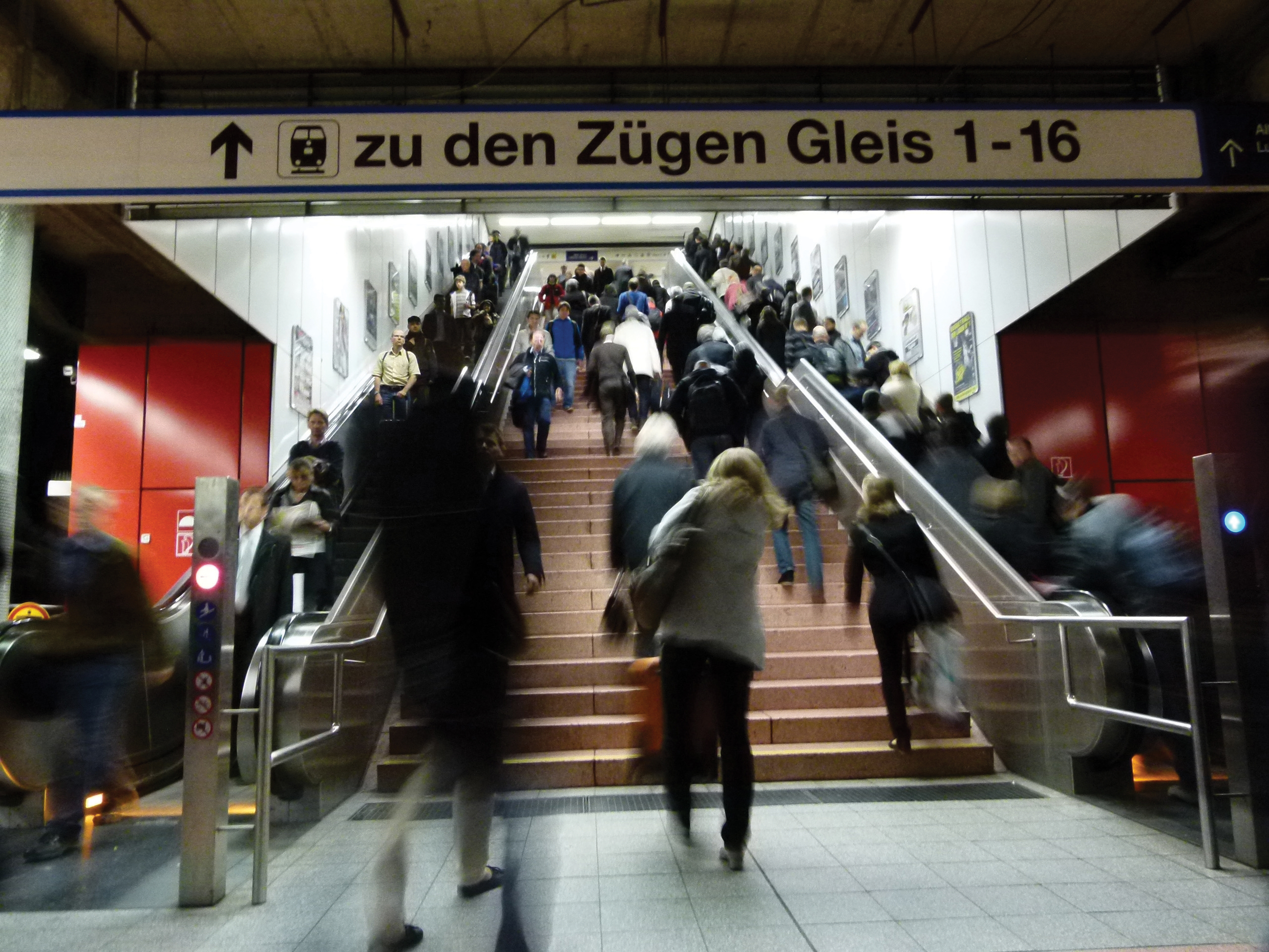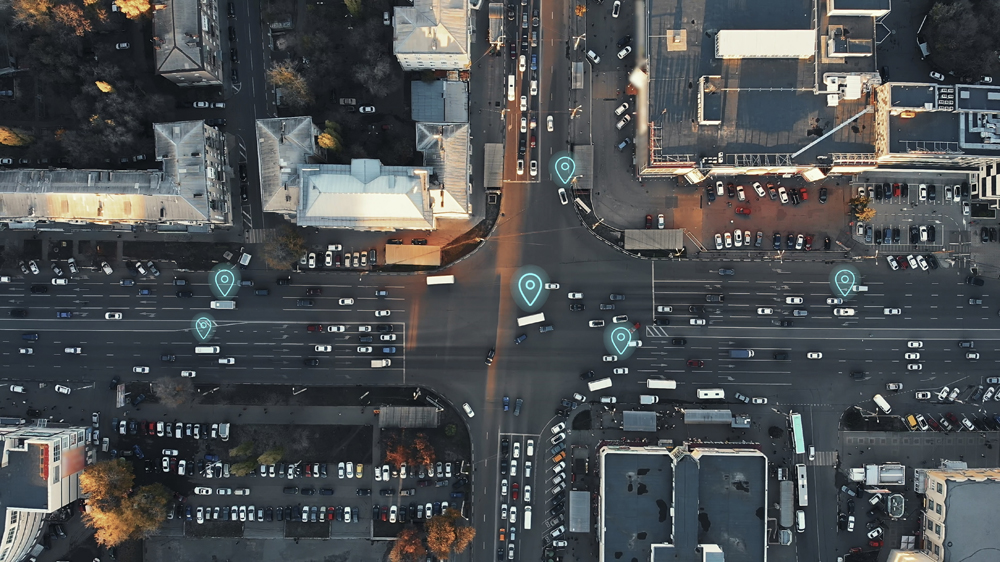Operators of public transport systems are arming themselves with sophisticated systems of technology to ward off terrorism threats to passenger safety. David Crawford reports. City transportation authorities worldwide are looking more keenly than ever for mass transit solutions to overcome traffic congestion and manage commuter flows. As they do so, concerns over passenger security are driving development of new technologies for terrorist incident detection, response and emergency passenger evacuation. The

The Stuttgart interchange in Germany, a test bed for new passenger emergency evacuation simulation techniques
Operators of public transport systems are arming themselves with sophisticated systems of technology to ward off terrorism threats to passenger safety. David Crawford reports.
City transportation authorities worldwide are looking more keenly than ever for mass transit solutions to overcome traffic congestion and manage commuter flows. As they do so, concerns over passenger security are driving development of new technologies for terrorist incident detection, response and emergency passenger evacuation.The network of a typical metro system, with its tunnels, moving trains and ventilation shafts, can distribute a chemical or biological (C/B) agent sufficiently through stations and tunnels to put the lives of as many as 100,000 people at risk. Metro stations are doubly sensitive to such threats, containing large numbers of people on the move at busy travel times. While a number of networks are introducing emergency exits to parallel evacuation tunnels where stations are a long distance apart, this is expensive and stations remain the main means of egress for passengers needing to escape incidents on trains.
Organised response
In the US, the Mass Transit Division of the Transportation Security Administration (TSA) has developed a risk-based security policy with a strong emphasis on technological solutions. One example is the US government’s ‘Protect’ Program for Response Options & Technology Enhancements for Chemical & Biological Terrorism. Global security business Smiths Group member company Smiths Detection, which specialises in threat management, has now been granted a license for this from theDeveloped by Argonne jointly with the US
“Within five minutes the operator will know not only that an attack has occurred, but its location and the nature and concentrations of the chemicals used,” says the company’s Jamie Edgar. Five minutes is accepted as the critical threshold for optimal mitigation of casualties, akin to the ‘golden hour’ after a road traffic accident that allows the best possible chance of saving life.
Installations advancing
An advanced Protect installation has recently been carried out on the Washington Metropolitan Area Transit Authority network and equipment of the New York subway (metro) is scheduled for 2013. The system is designed to combine detection capability with sensor verification software and the video networking necessary to provide effective situational awareness for first responders and law enforcement agencies. A common operational picture can be shared in real-time as incidents occur and develop, via real-time access to controllable cameras, sensors, tracking systems and maps using networked PCs, laptops and handhelds. Protect distributes information securely via Internet Protocol networks using secure socket layers in a standard web browser, conforming with US Defense Department and Homeland Security mandated encryption.Smiths Detection is currently investigating the feasibility of integrating radiation and nuclear fallout detection, with the possibility of a pilot “within a few months”, according to Edgar. In response to its first approach from outside North America, Smiths Detection has submitted a proposal to the Norwegian capital of Oslo.
Seeking national rollout
Some US operators have been voicing hopes of US government support for a national rollout, accompanied by detailed guidance, development of technology standards and, not least, availability of grant funding. But the TSA will say only that it “encourages transit agencies to deploy chemical and/or biological detection systems as their resources allow”.Another US product is the Breathe Safe System. This was developed originally by Florida-based
Trace detection
In Canada, a three-month trial has just been concluded at the Churchill Station of the light rail system of the City of Edmonton, of technology designed to detect explosive and radiological traces on passing passengers and their fare cards.Using the Edmonton Transit System’s existing ticketing installations, Clear-Use (developed by US-based
Scanning was used to pick up any changes in colour in the polymer coating that would indicate contact with a dangerous substance.
A second line of passive radiological threat detectors in station ticket vending machines looked out for traces of radioactive materials being carried on passengers’ person.
The two technologies are designed to work together and, if they detect a threat, flash a silent alert to transit security and trigger video surveillance of the suspected passenger.
The trial aimed to equip transit operators across Canada with key data for decision making on security policy, according to Defense R&D Canada’s Centre for Security Science, which provided the funding. It selected Edmonton as a mid-size city with a comprehensive public transit system, and wanted a non-intrusive technology to test.
Evacuation
The need for more effective evacuation strategies is focusing attention on techniques for computerised microsimulation of individual passenger movement scenarios, rather than the conventional reliance on models using cellular automata. In China, where a boom in metro construction is under way, research by the China Academy of Safety Science & Technology and the Guangzhou Metro Corporation has highlighted the role of detailed computational modelling of the numbers and types of people needing to be evacuated, available routes and location of safety zones as the basis for the engineering calculations needed to design in correct evacuation times.A European approach, showcased at the July 2012 Railway Terminal World Design & Technology Conference in Vienna, involves the
Simwalk simulates passengers as separate individuals with appropriate characteristics (size, gender, age, behaviour, moving realistically and continuously in space) and integrates transport vehicles and station equipment (eg lifts and escalators) for the capacity calculations needed to estimate evacuation times.
Studies carried out by the team at the Stuttgart heavy rail and S-Bahn (metro) interchange in Germany, have found that in an emergency, passengers’ movements are at the same time fast, reluctant and complex, depending crucially on the amount and quality of information available to them. Passengers are also less goal-driven than in normal flows, when they have specific destinations, and this affects their reaction times.
The studies have also shown that simulations need to be realistic enough to model the elderly, the disabled (whose needs are not always recognised in other methods) and the encumbered (by heavy luggage, baby buggies or bicycles). SimWalk now incorporates these features.
While in Germany, as in other countries, there is no current requirement for the use of realistic simulation techniques in the planning and approval of transport buildings, there is growing pressure for their deployment. German rail operator












